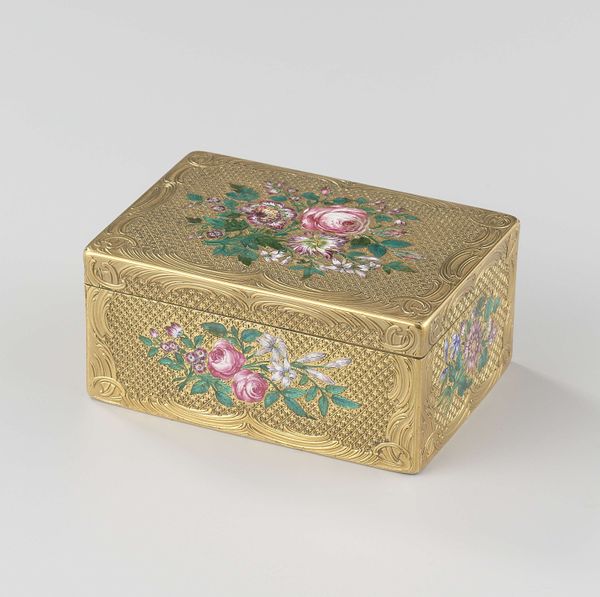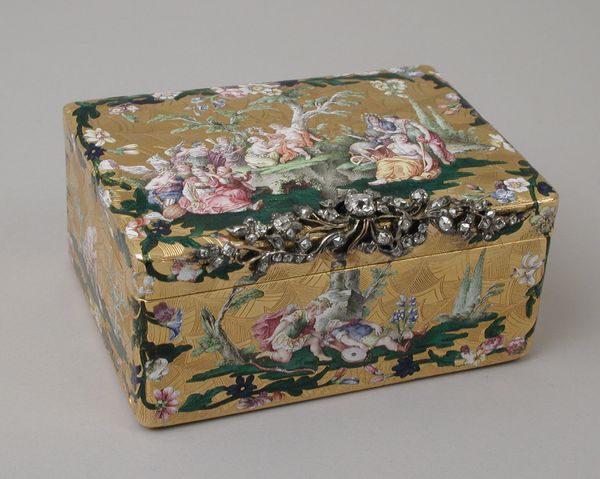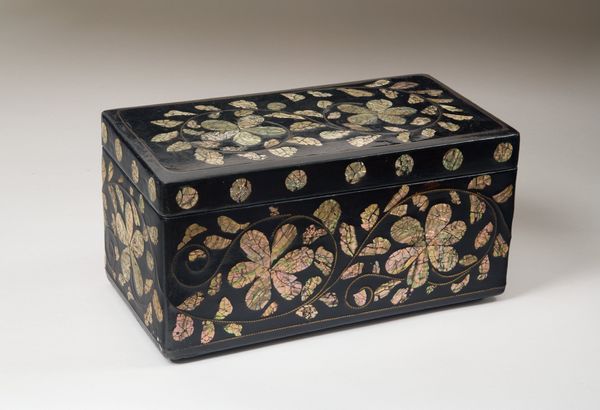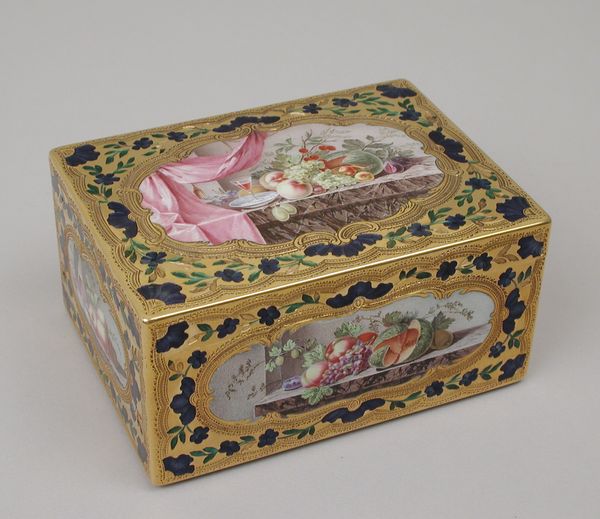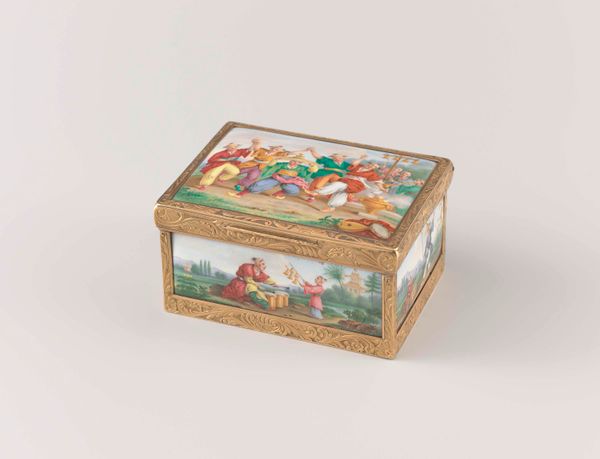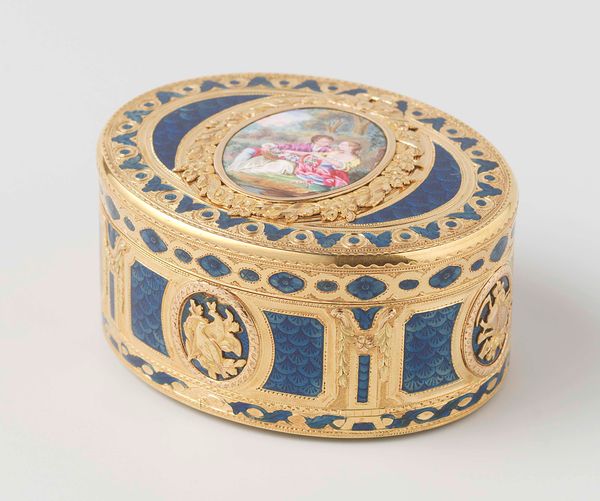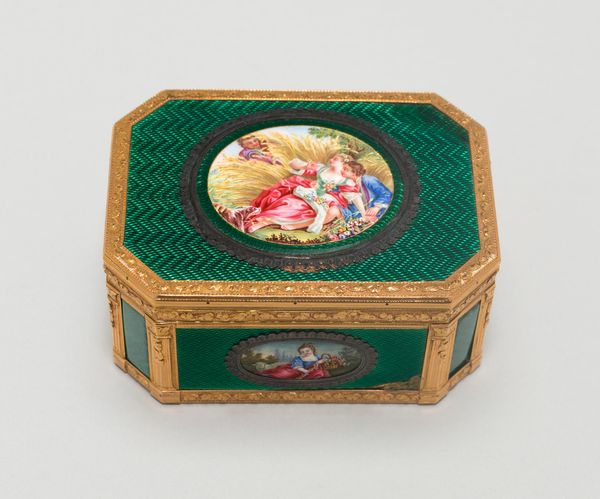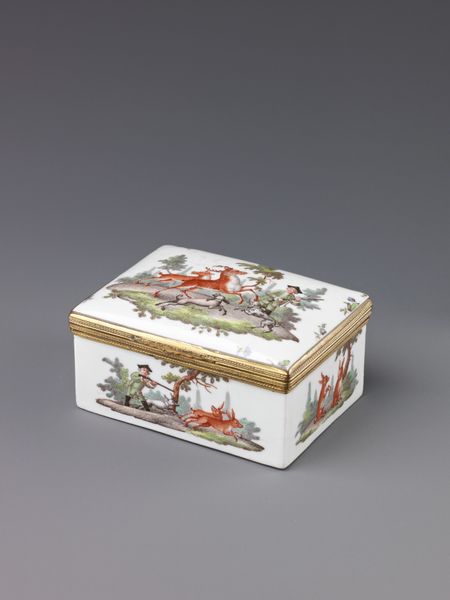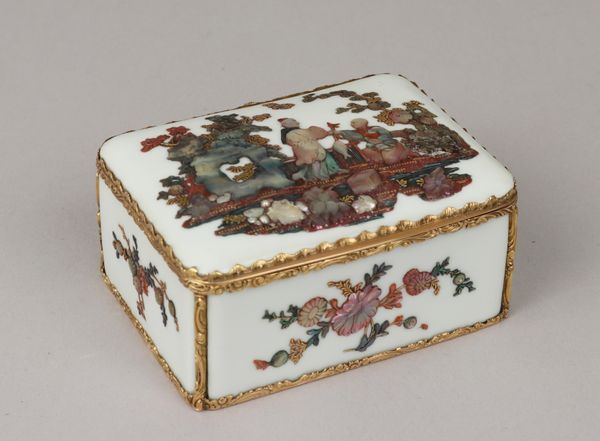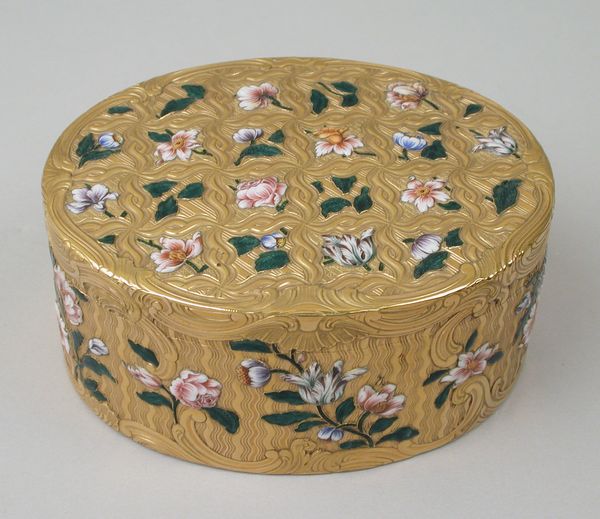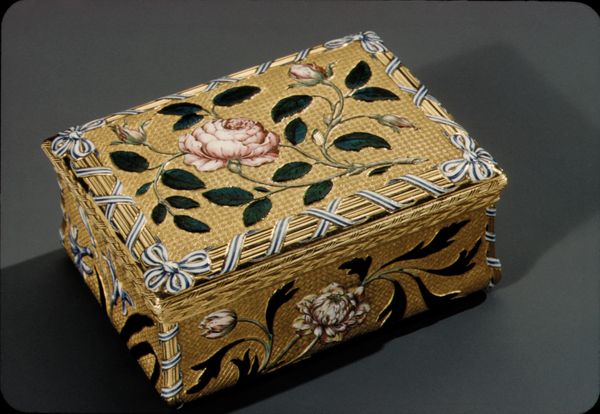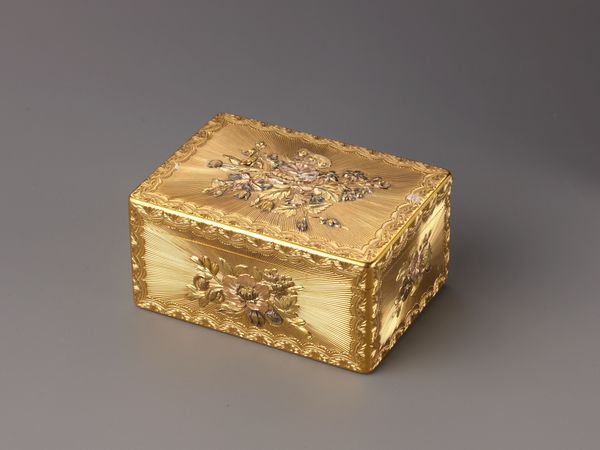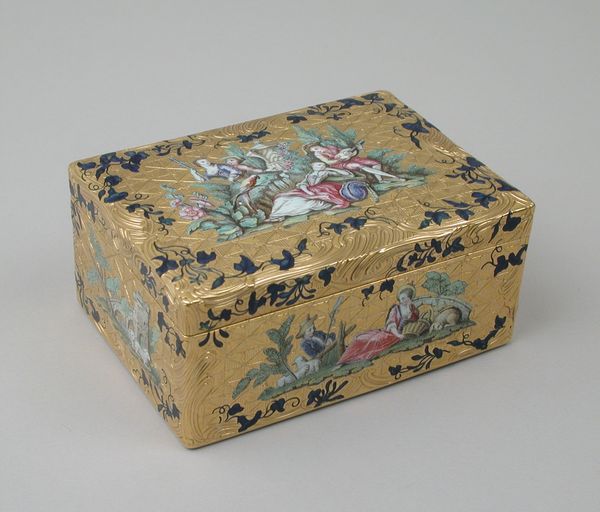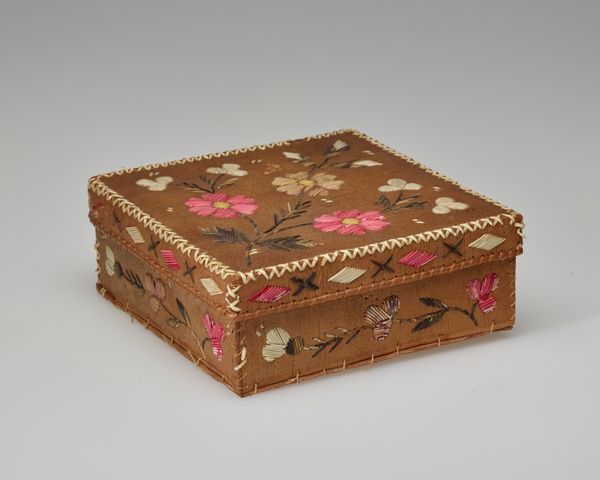
Snuifdoos van goud, rechthoekig, versierd met bloemboeketten in émail c. 1752
0:00
0:00
brass, gold, enamel
#
naturalistic pattern
#
brass
#
gold
#
repetitive patten
#
pattern background
#
geometric
#
enamel
#
regular pattern
#
pattern repetition
#
decorative-art
#
rococo
Dimensions: height 3.4 cm, width 7.3 cm, depth 5.2 cm, weight 170.28 gr, width 7.3 cm, depth 5.2 cm
Copyright: Rijks Museum: Open Domain
Curator: Oh, isn't it just the sweetest little thing? Editor: Well, my first thought is "opulent," isn't it? What exactly are we looking at? Curator: This darling is a gold snuffbox, dating back to around 1752. It’s rectangular and adorned with delicate enameled flower bouquets. It’s signed by Lazare Antoine Clérin. Editor: Right, and immediately you see how the Rococo style just oozes out of every detail. Look at that meticulous symmetry. And that relentless detail – it's almost claustrophobic! Do you agree about Rococo's over-the-top ornamentation here? Curator: Absolutely! But not claustrophobic, oh no, I feel nestled in its embrace! All these blooms...it’s like a tiny, enchanted garden condensed onto something you could hold in your palm! You can almost smell the sweet perfume. Editor: See, I can respect the level of craft, of course— the intricate patterns etched into the gold, the precision of the enamel work. The contrasting textures work pretty well: rigid gold vs natural enamel Curator: It's not just craft, though. Imagine the person who owned this, who handled it. The stories it could tell of whispered secrets and powdered wigs... I bet it felt divine to take a pinch from such beauty, don't you think? It almost felt spiritual. Editor: Ha! Spiritual maybe for the wealthy elite of 18th-century Europe...more secular to me. However the consistent application of botanical elements with precision gives it a scientific realism that makes it attractive even from a post-industrial standpoint. Curator: It takes incredible skill to paint these perfect botanical scenes on something so tiny; it shows so much devotion. It’s precious but playful! Editor: Well, I appreciate how we're seeing ornament evolve from pure symbolism to more abstract pattern; almost as proto-modernist surface decoration here. Curator: Either way, this gorgeous little object encapsulates an era's love of beauty and exquisite craft. Editor: An object demanding a highly trained aesthetic sensibility and a desire for complete sensorial saturation.
Comments
No comments
Be the first to comment and join the conversation on the ultimate creative platform.
